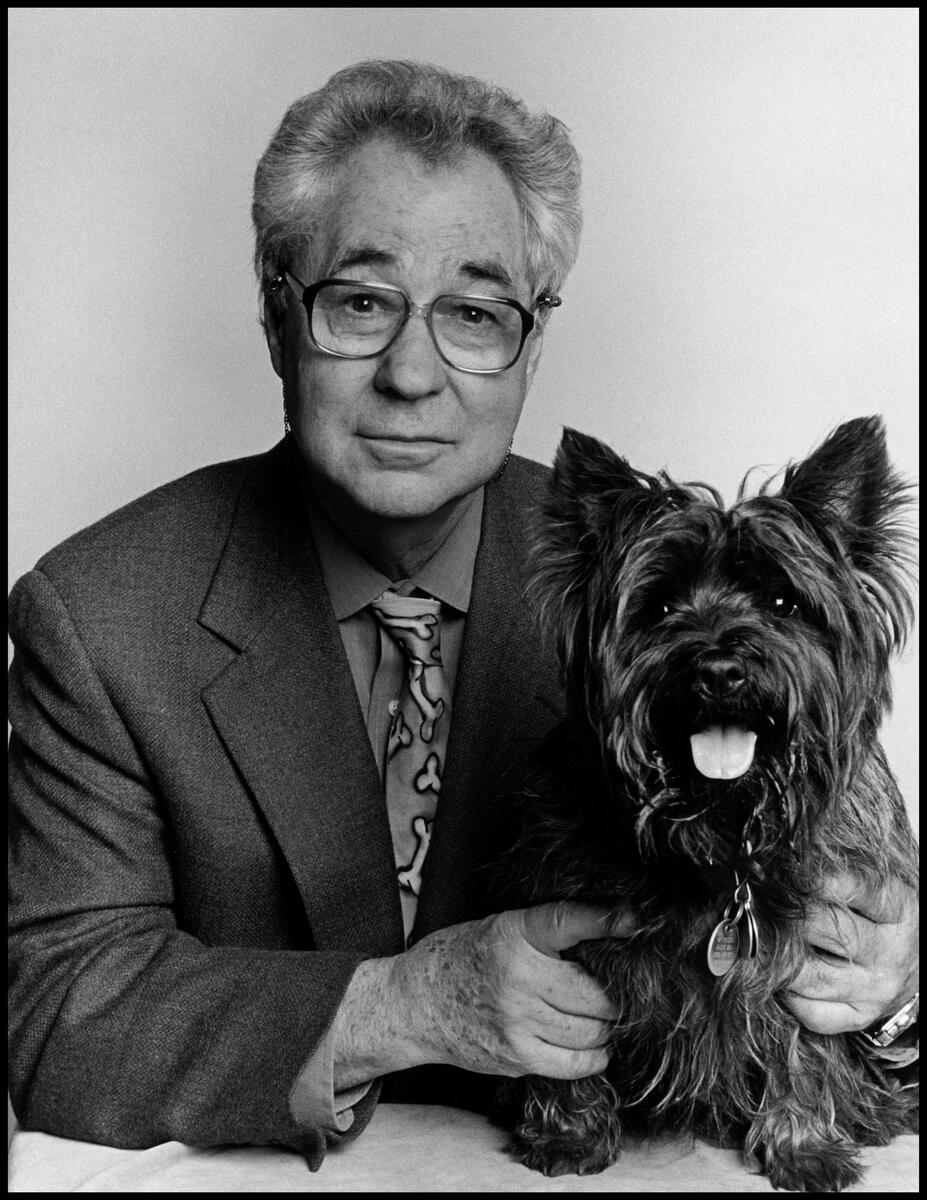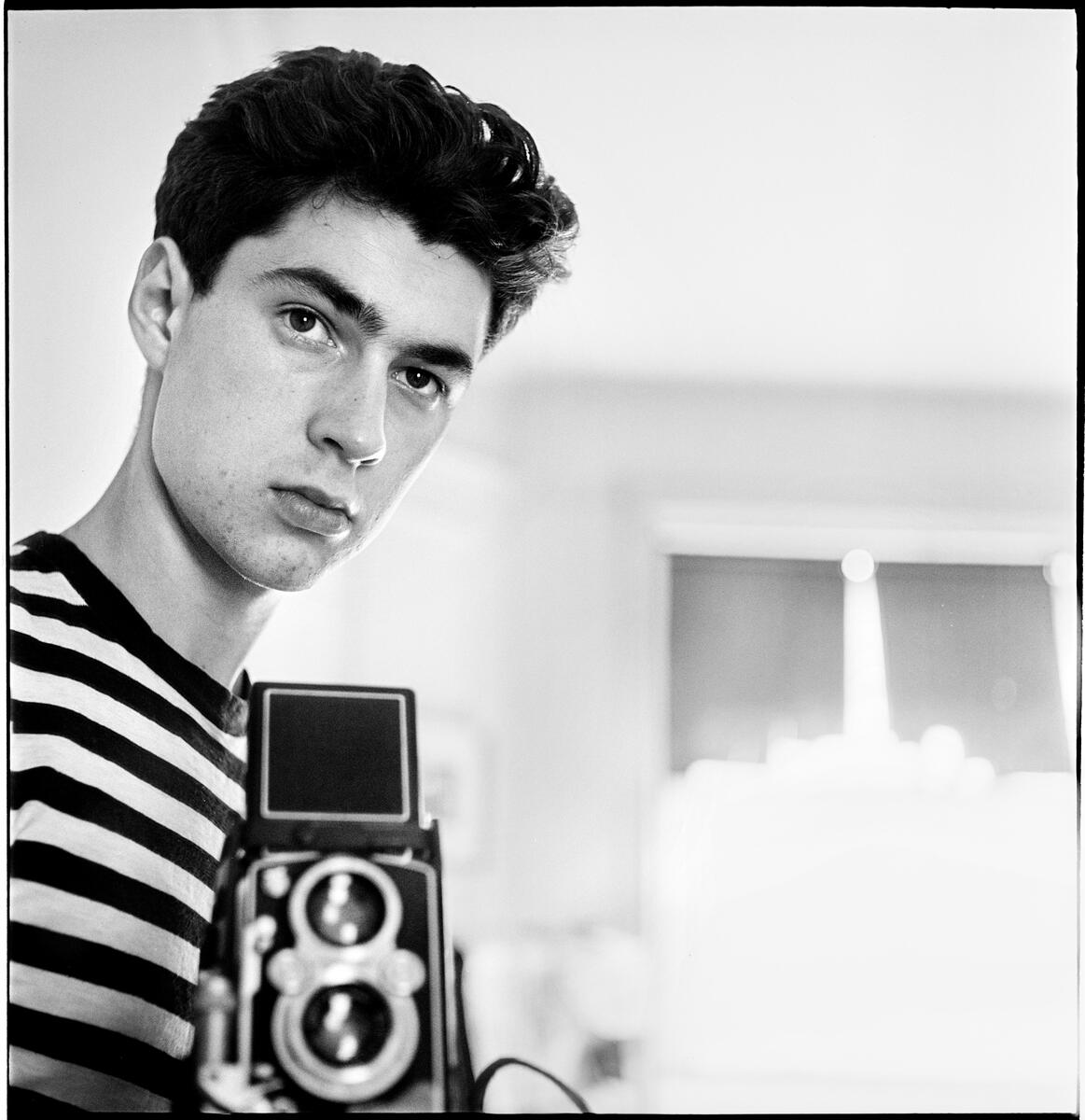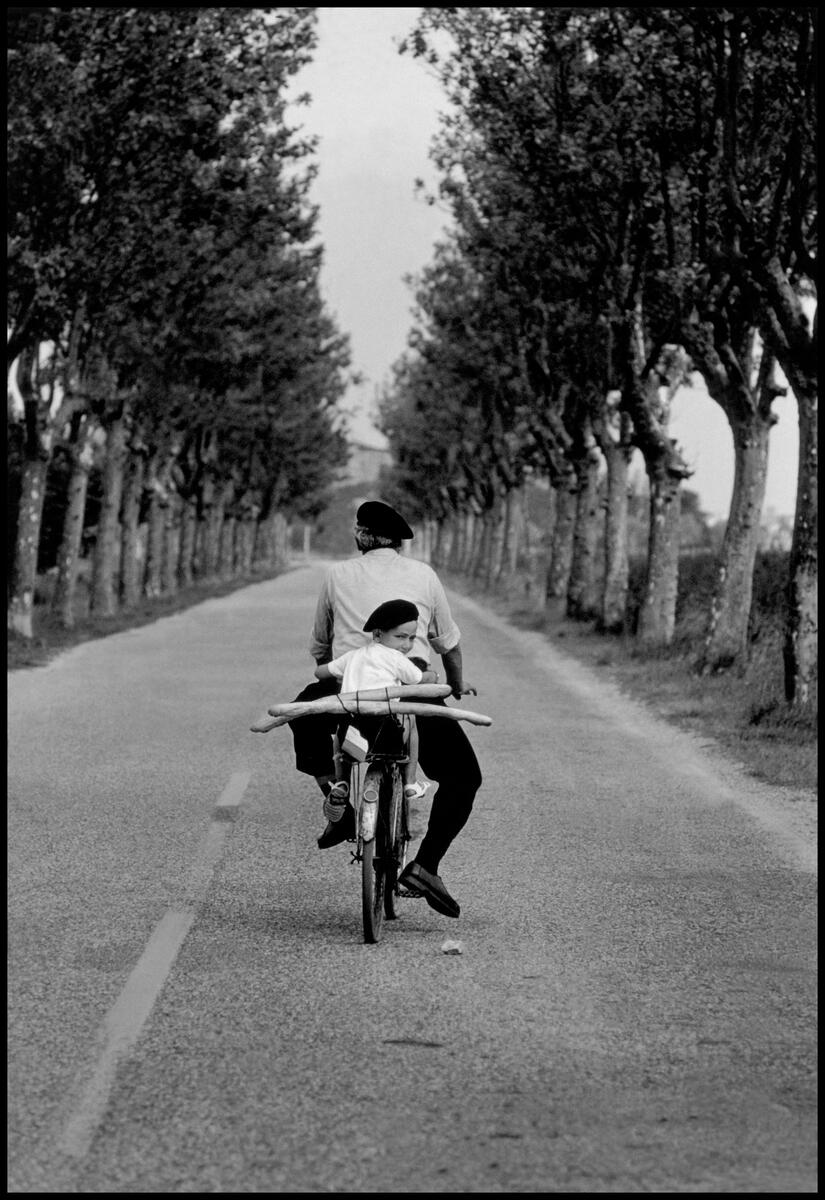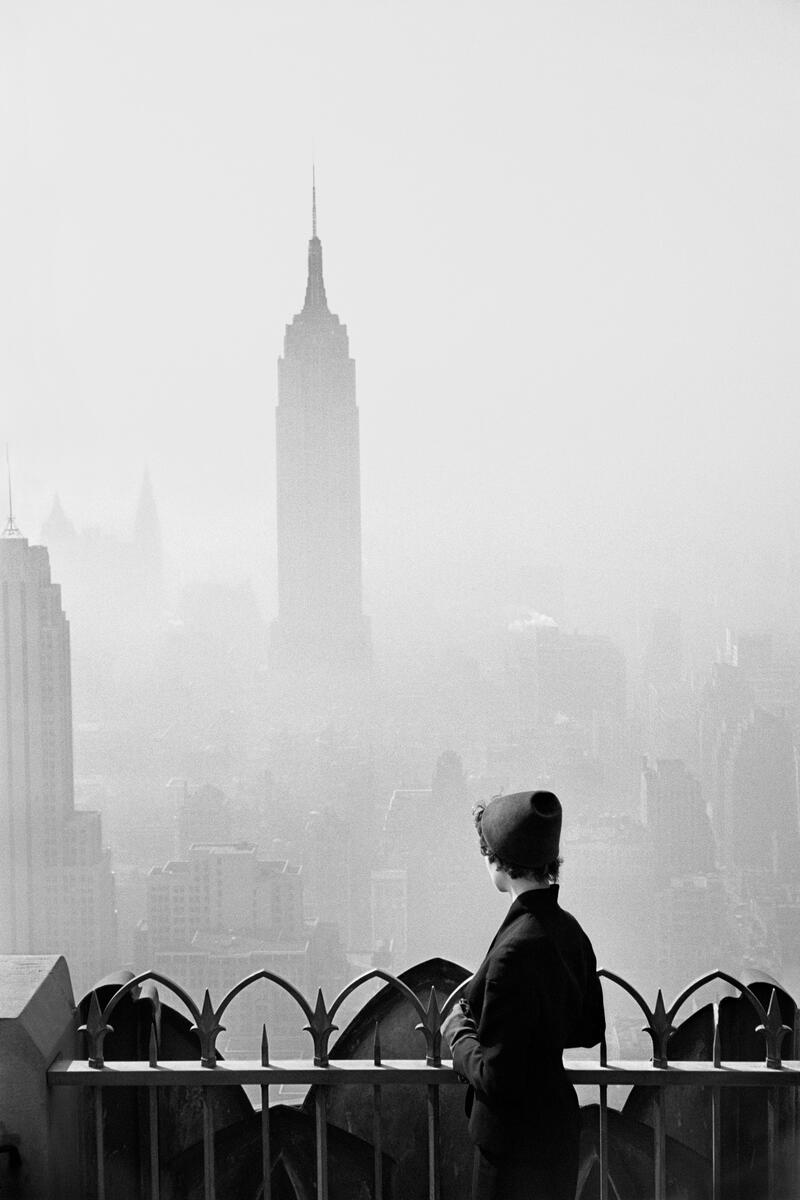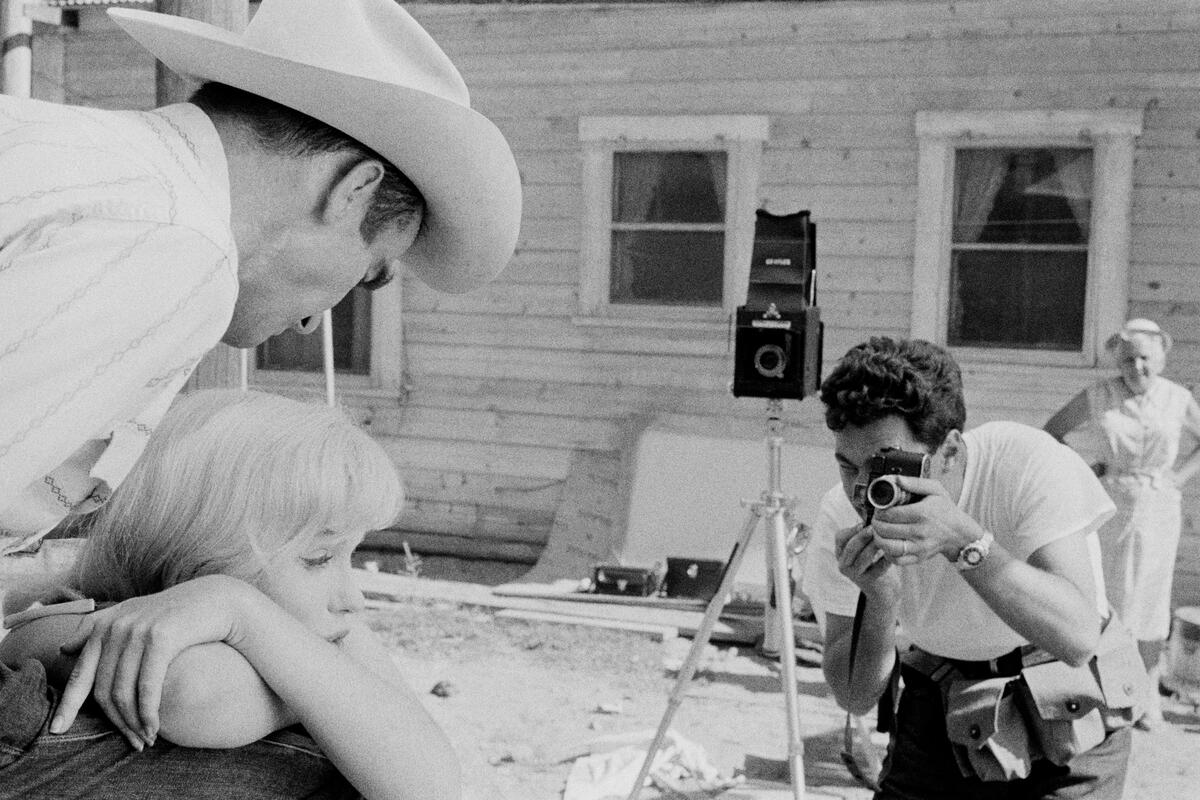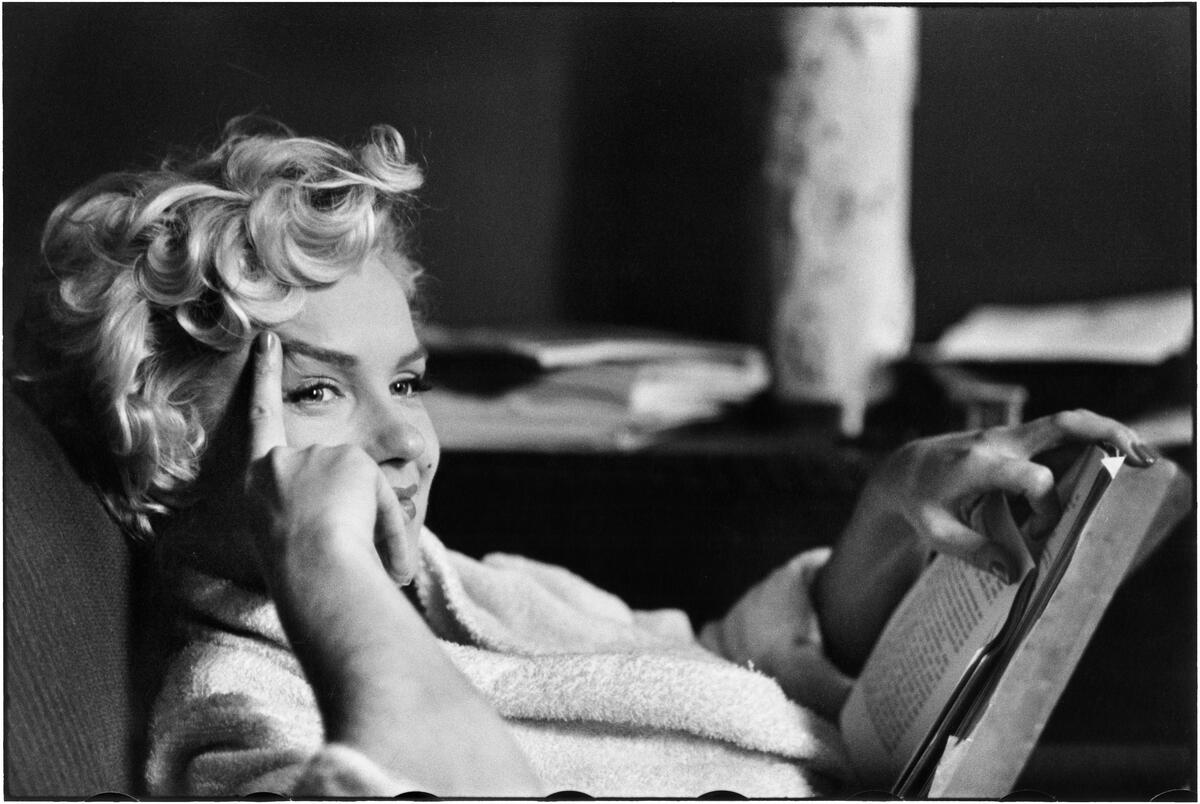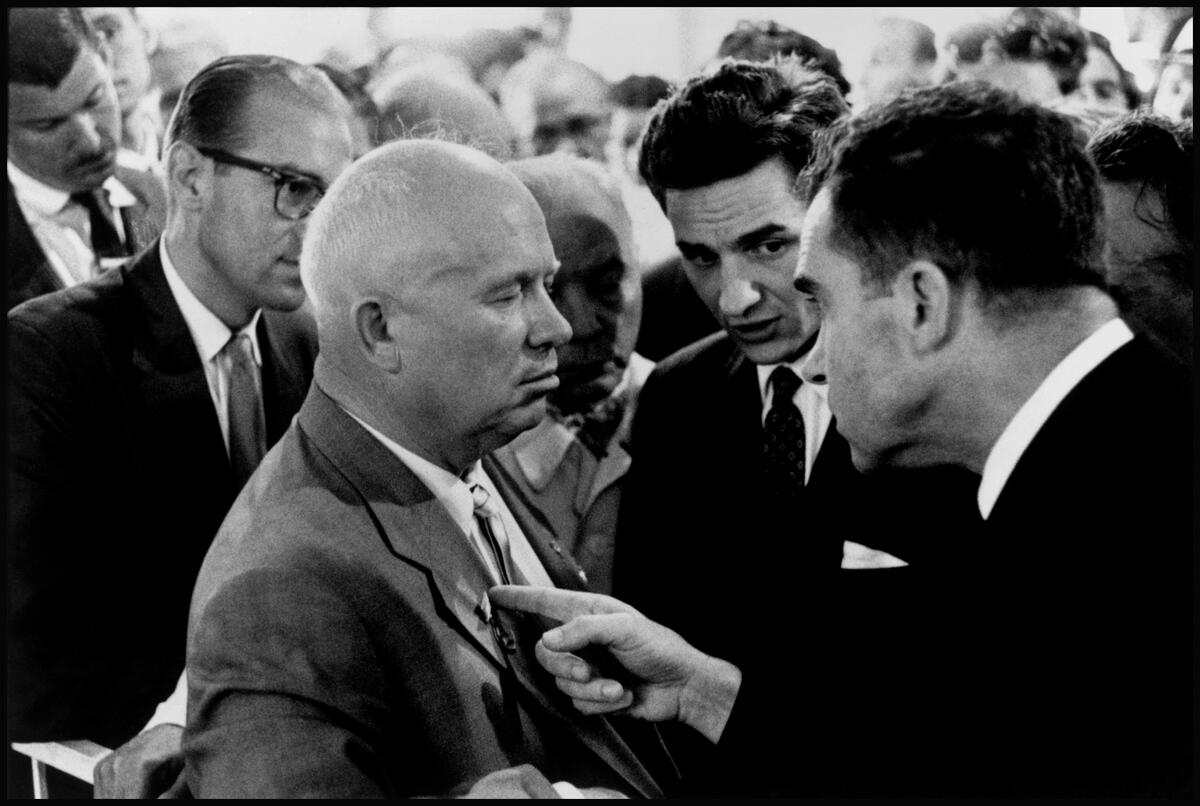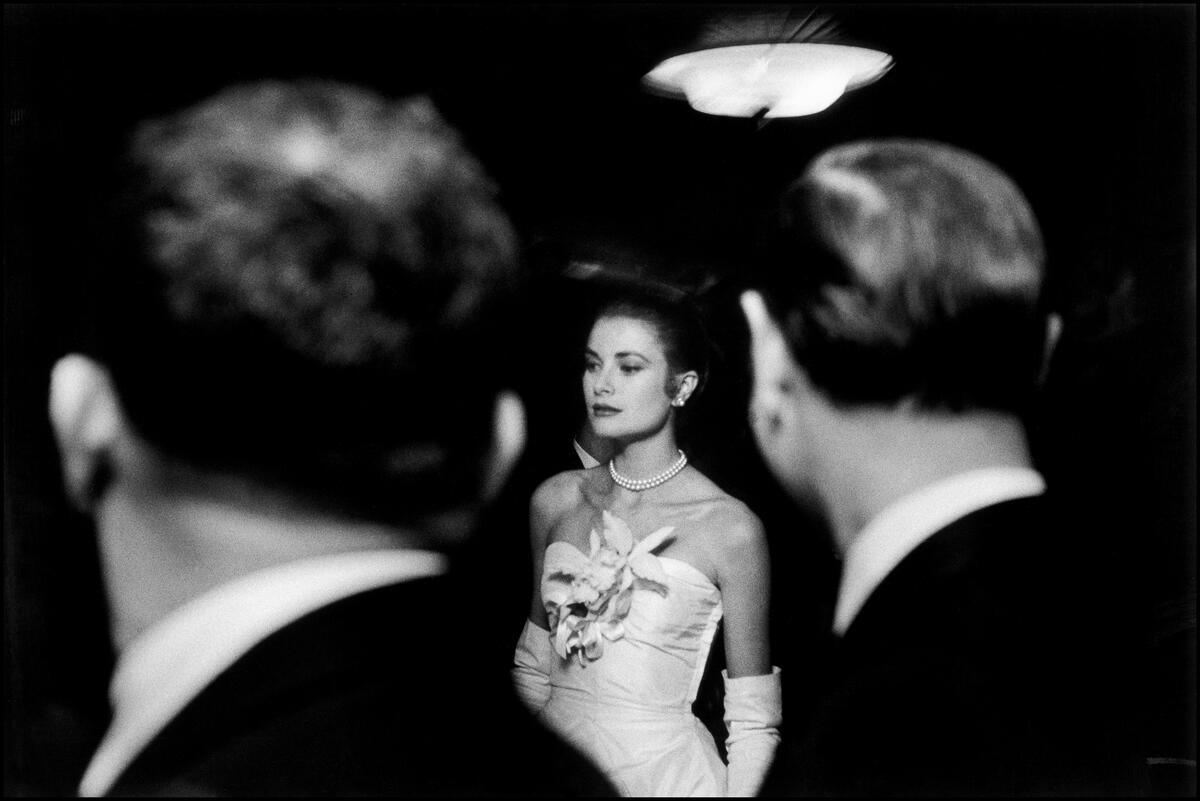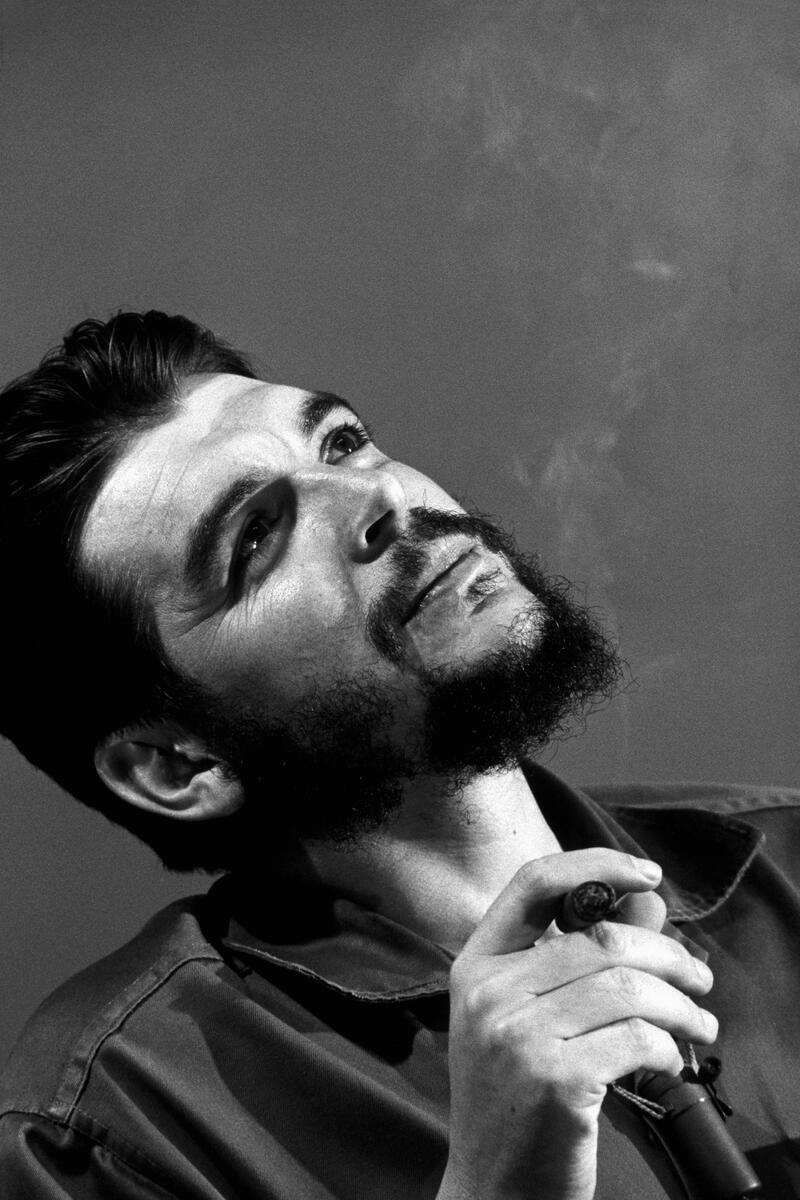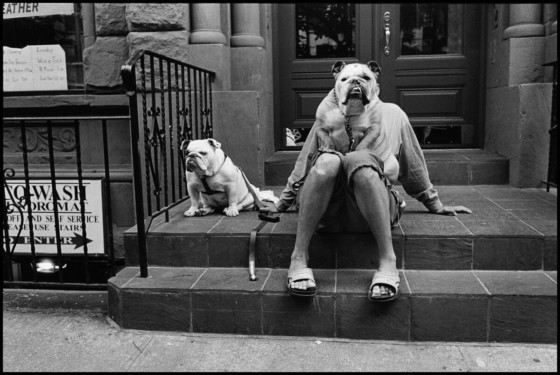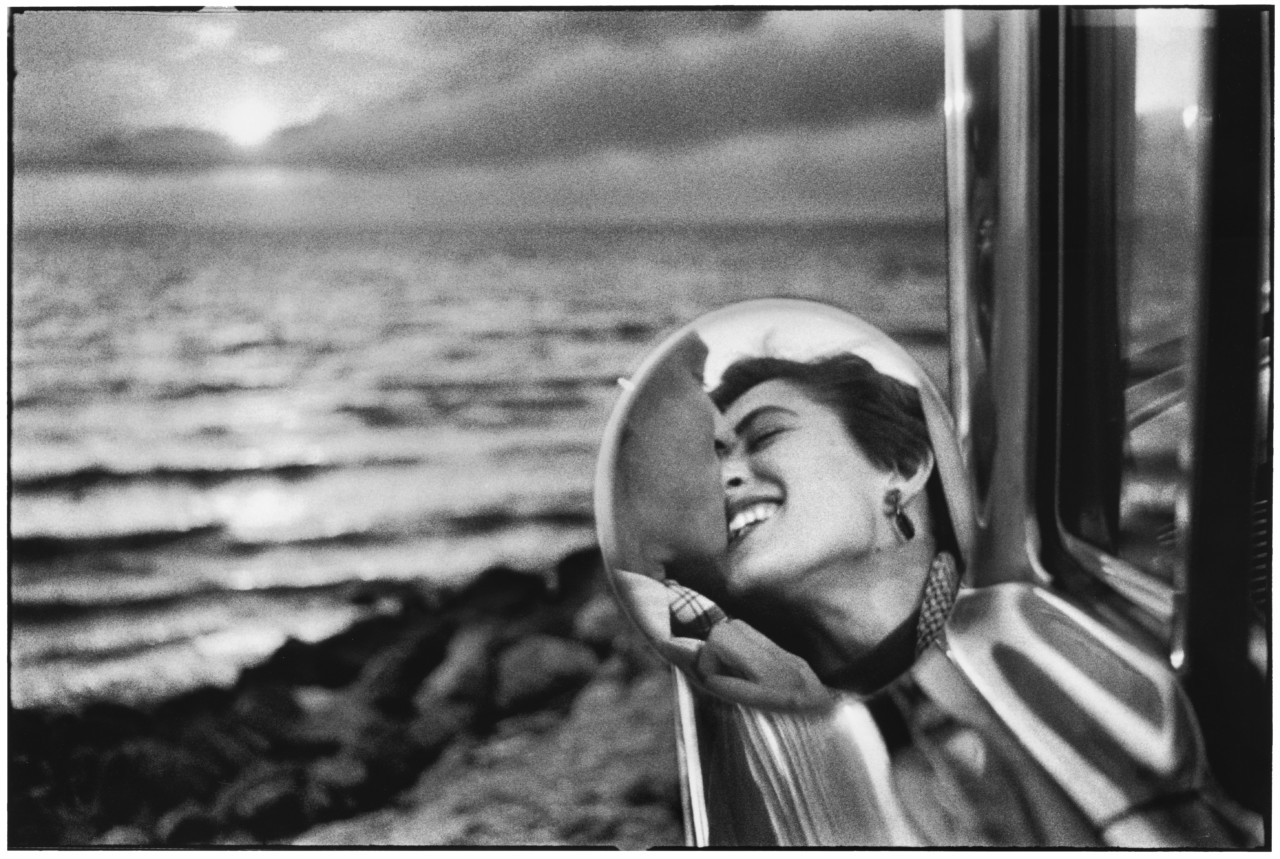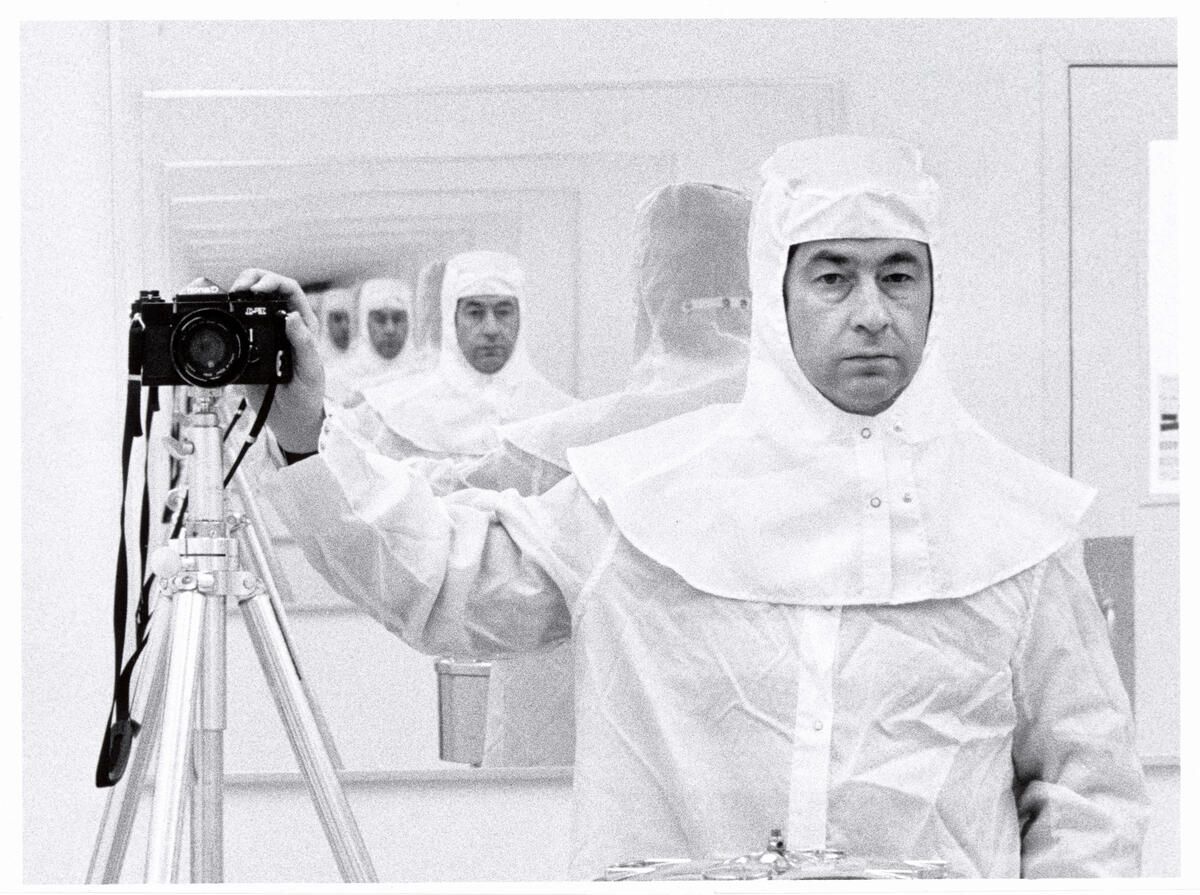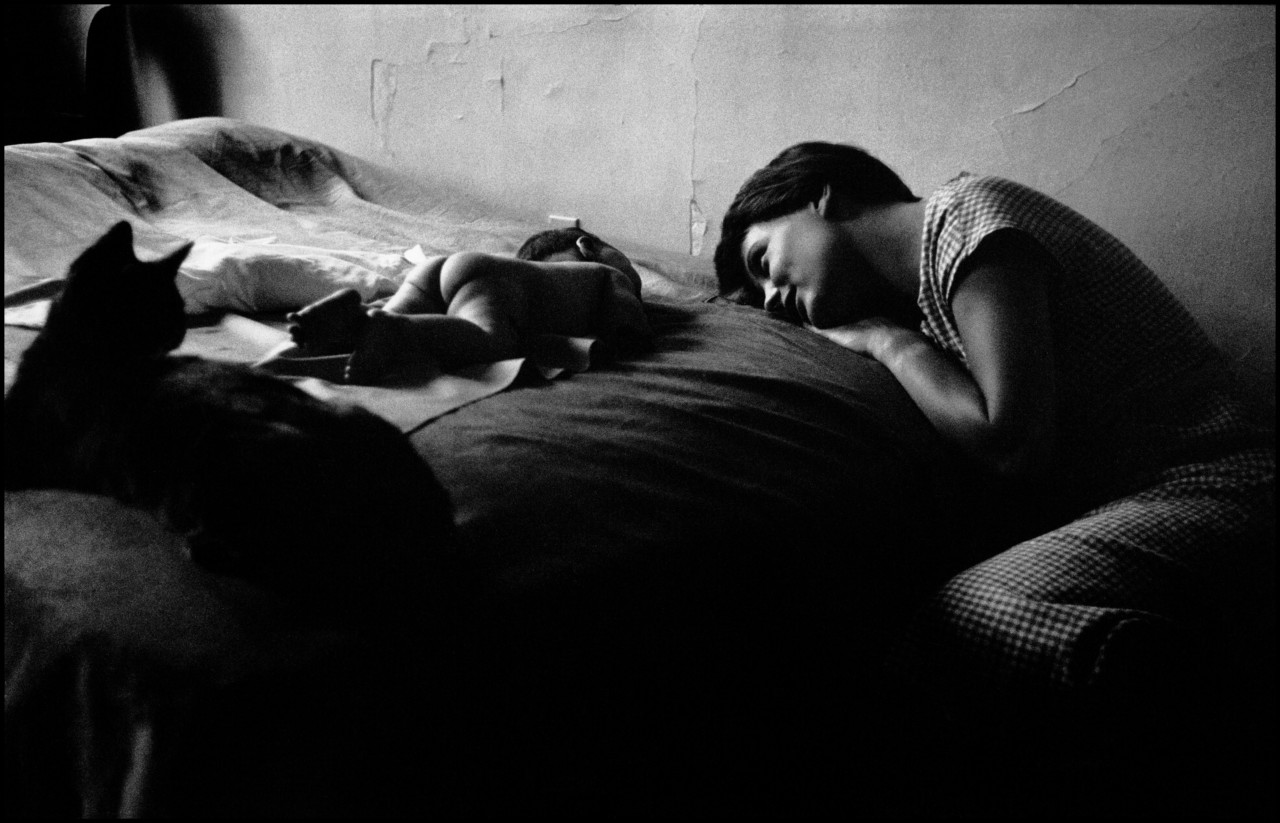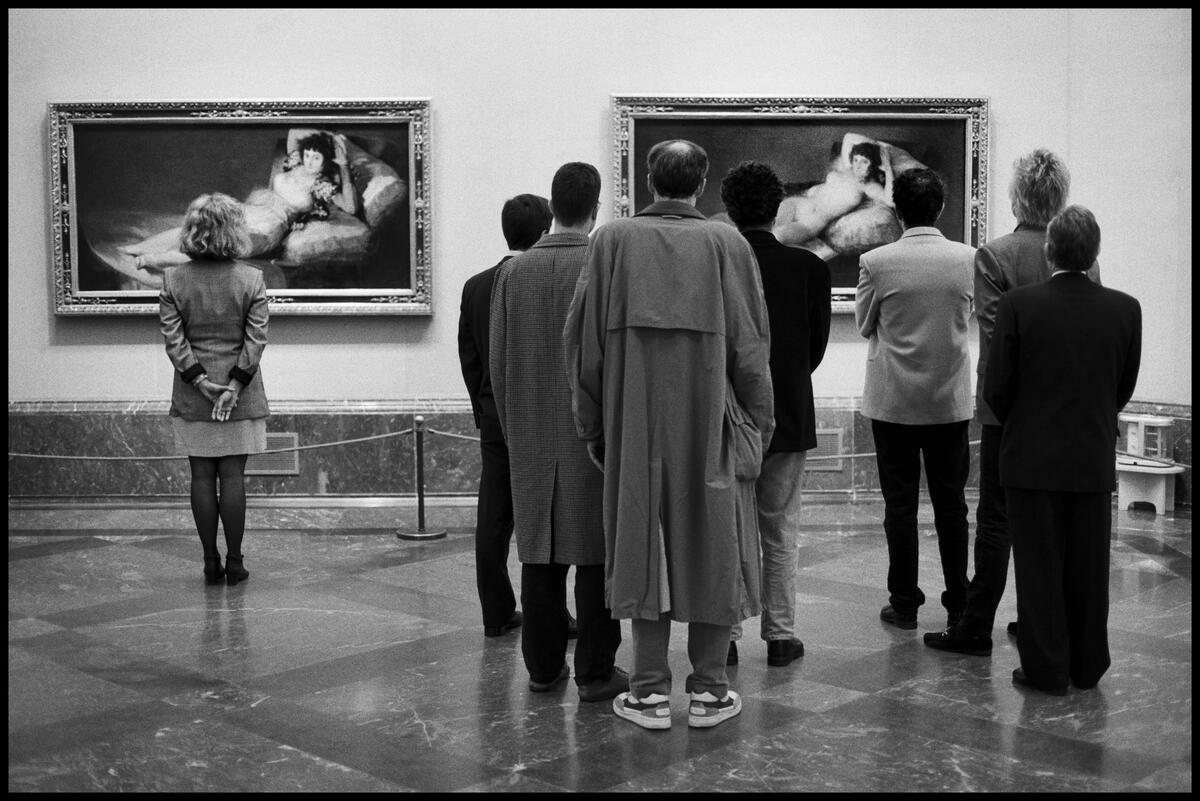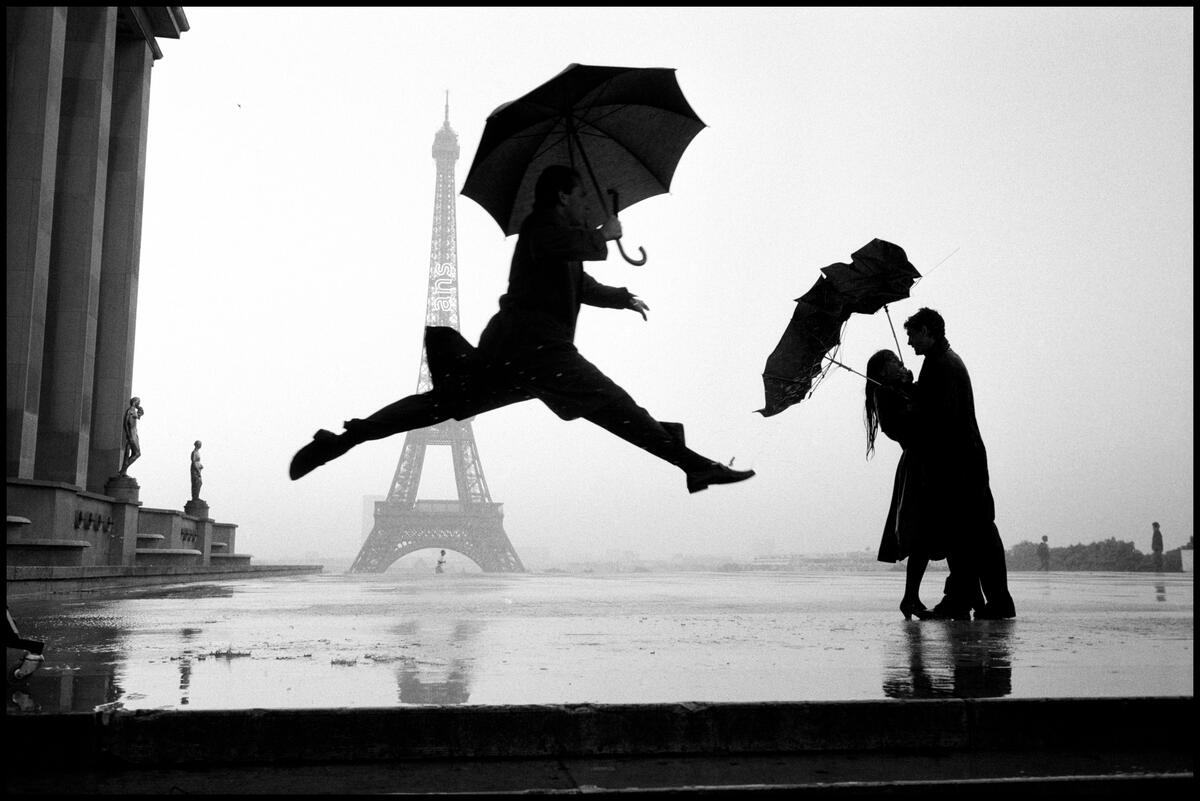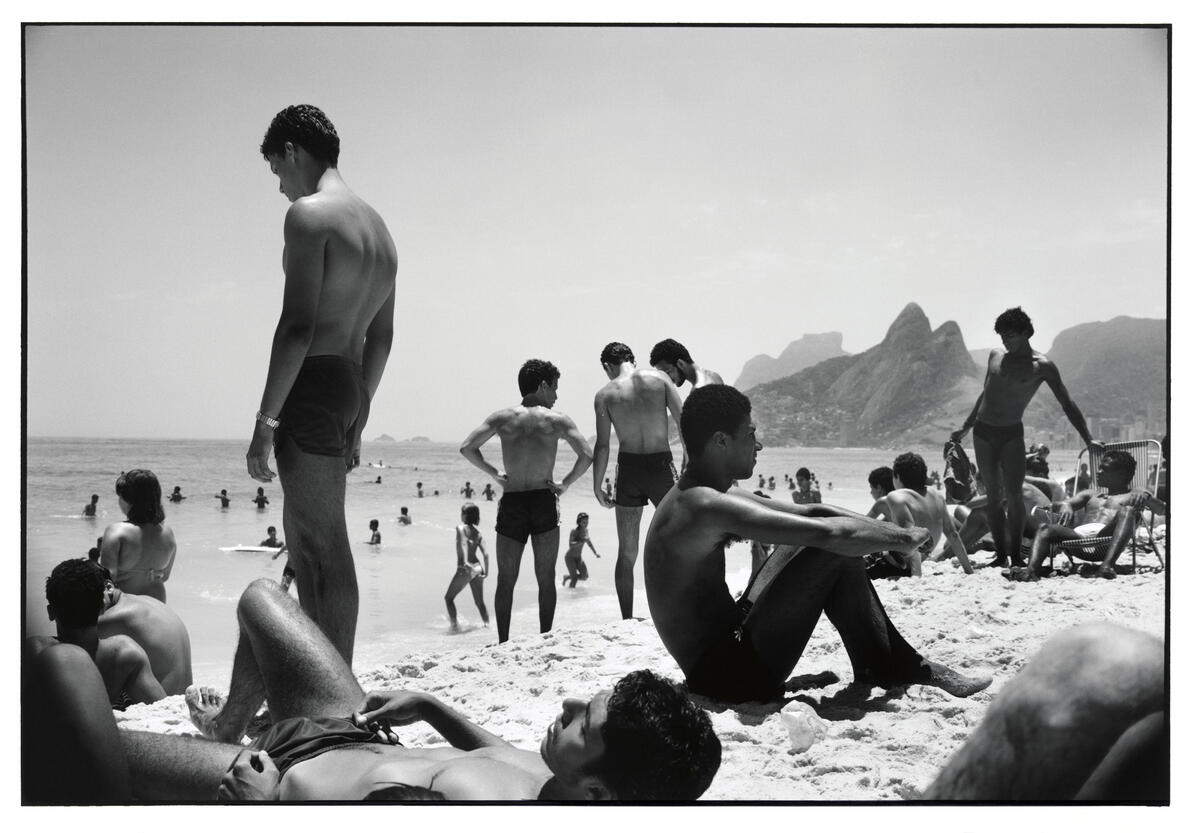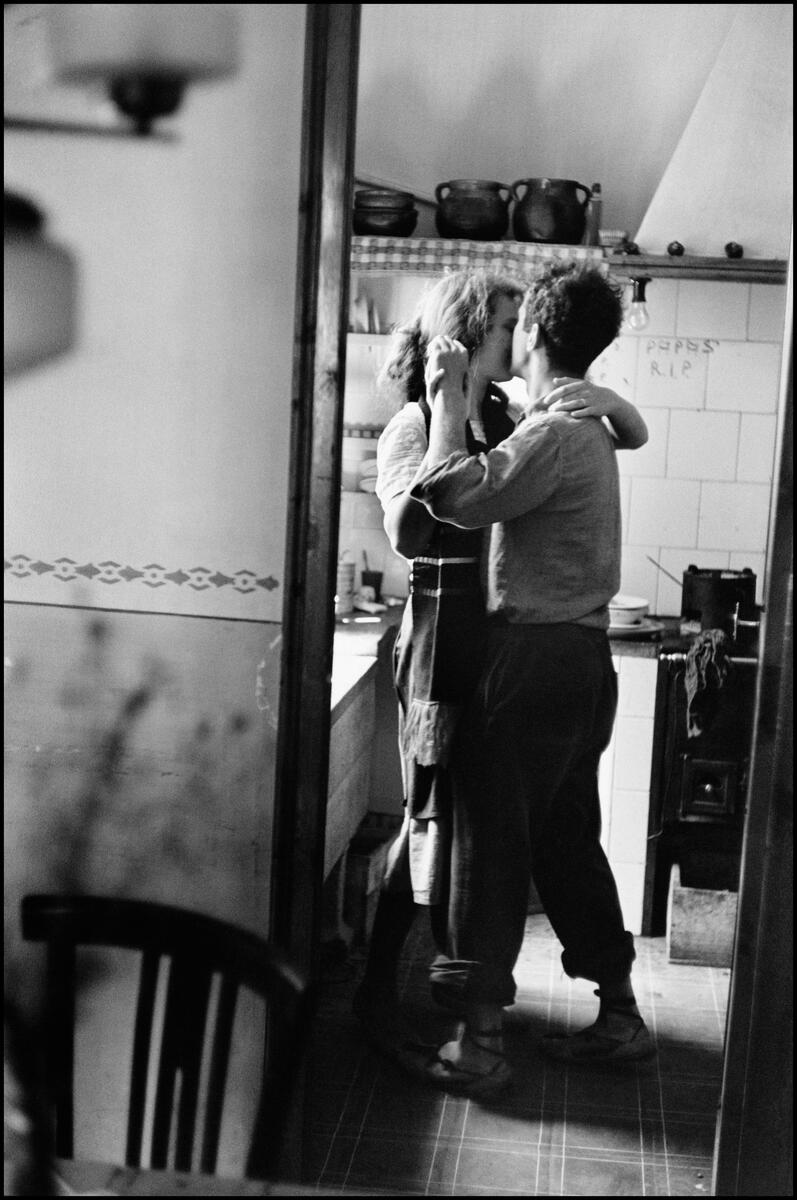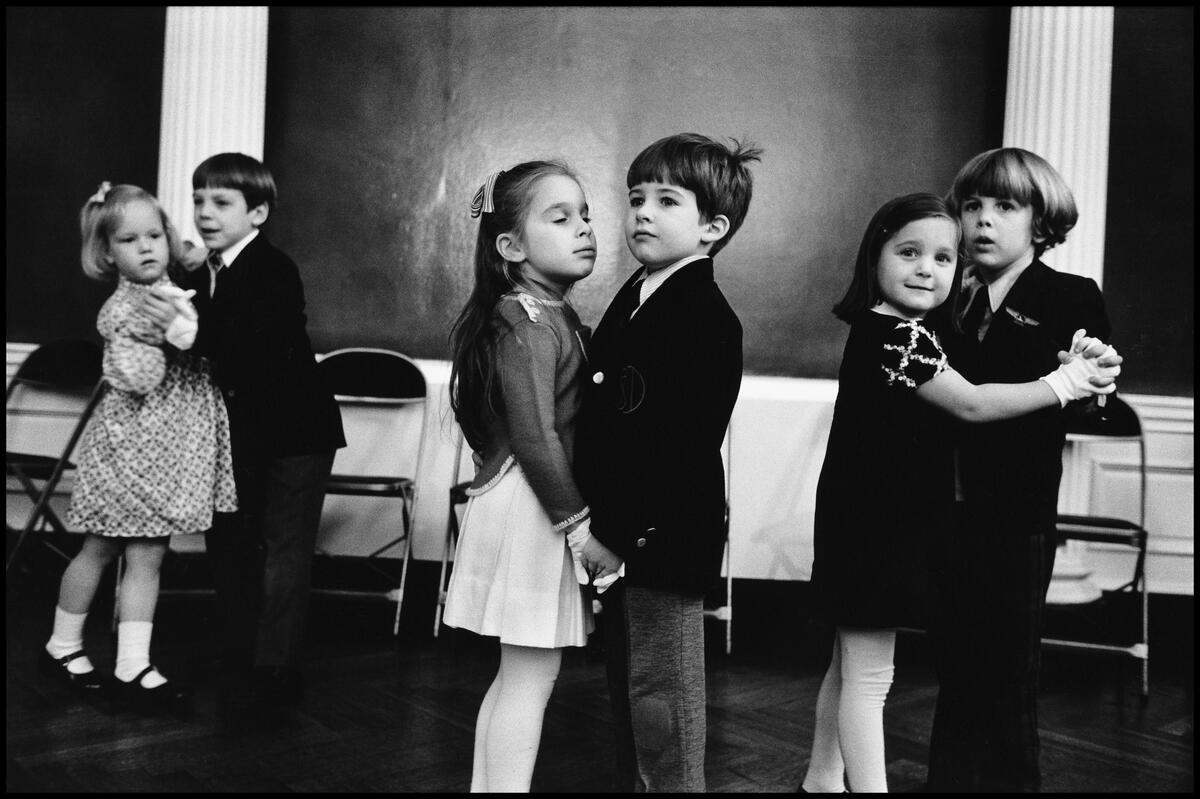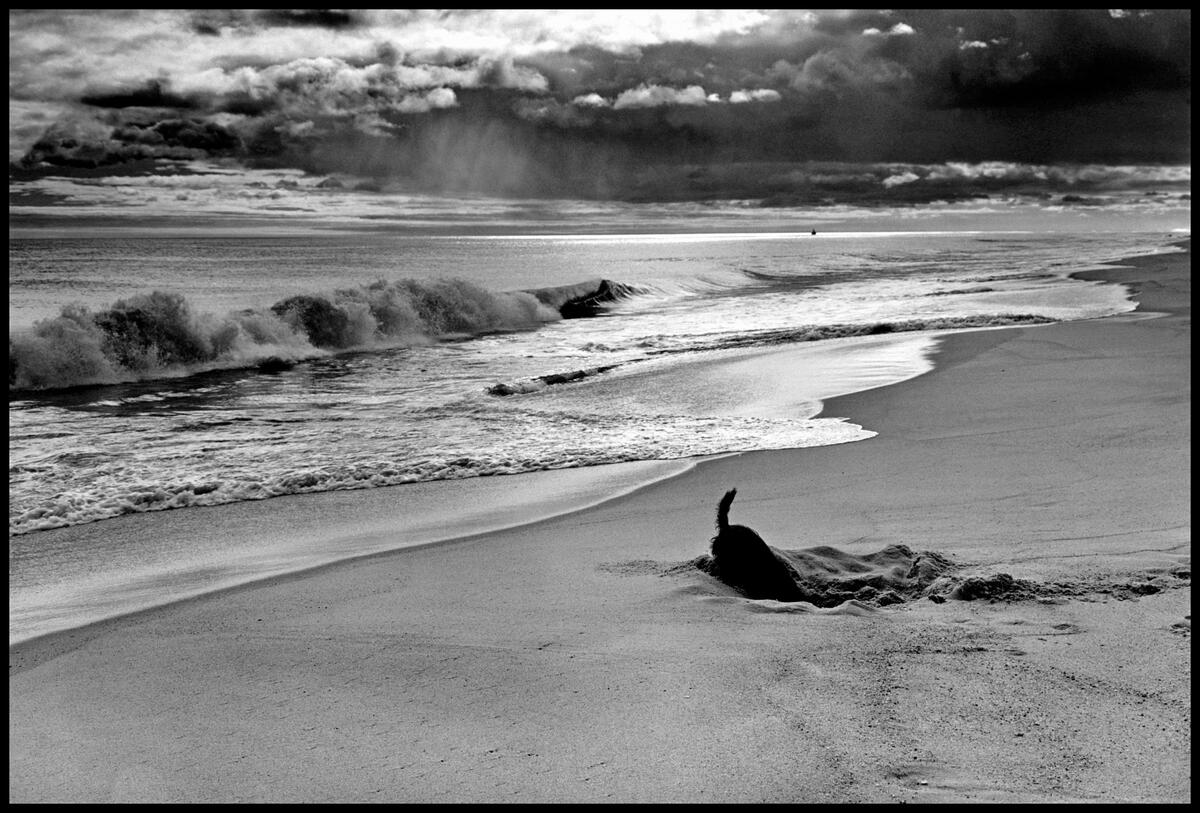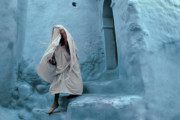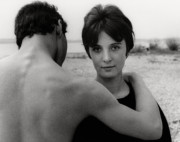Remembering Elliott Erwitt (1928–2023)
Legendary photographer and long-time Magnum member Elliott Erwitt has passed away at the age of 95.
Elliott Erwitt was born Elio Romano Ervitz to Russian-Jewish parents in Paris in 1928. He spent his childhood in Milan, and emigrated to the US in 1939 when fascism drove his family out of Italy. Erwitt was living with his father in Los Angeles when he began to take portraits of local people to make money. Working in a commercial darkroom, the teenage photographer spent time printing images of actors before further experimentations with photography at Los Angeles City College. In 1948, Erwitt moved to New York, the city that would go on to provide material for the work of much of his career, and where his life and family would be centered. After a time working as a janitor, he took up film classes at the New School for Social Research.
Erwitt traveled to France and Italy in 1949 with the Rolleiflex camera that he favored during those years. In 1951, he was drafted for military service and undertook various photographic duties while serving in a unit of the Army Signal Corps in Germany and France.
While in New York, Erwitt met Edward Steichen, Robert Capa and Roy Stryker, the former head of the Farm Security Administration. Stryker had contributed to the careers of Walker Evans, Ben Shahn, Dorothea Lange, Marion Post Wolcott, Gordon Parks and more. He initially hired Erwitt for a job in New Jersey, for the Standard Oil Company, where Stryker was compiling a photographic library. Following this, Stryker commissioned Erwitt to undertake a project documenting the city of Pittsburgh in 1950, a series that Erwitt published as a book in 2017.
In 1953, Erwitt joined Magnum Photos and worked as a freelance photographer for Collier’s, Look, LIFE, Holiday and other luminaries in that golden period for illustrated magazines. Throughout his life, he worked as a commercial photographer and journalist. Famous figures he photographed included Marilyn Monroe, Grace Kelly, Jack Kerouac, John F Kennedy and Jackie Kennedy. In 1959, he was present to capture the moment of tension between Nikita Khrushchev and Richard Nixon during the diplomatic visit that went on to be known as the Kitchen Debate. In 1964 Erwitt visited Cuba and made portraits of Fidel Castro and Che Guevara.
It was Erwitt’s firm belief that photography should speak to the senses and emotions rather than intellect. “When the photograph happens, it comes easily, as a gift that should not be questioned or analyzed,” he said. Erwitt preferred not to intellectualize his profession, often stating simply that photography allowed him to pursue his interests while making a living.
Erwitt employed dedication in seeking out the most absurd and the charming moments of life. Much like his photographs, his views on his practice were often instantly memorable, usually taking the form of pithy, epigrammatic sayings. The director of the documentary Elliott Erwitt: Silence Sounds Good, Adriana Lopez Sanfeliu, spoke about the difficulties there were in showing Erwitt’s more private side, saying of the filming process that it’s “hard to portray someone as big as him.”
Dogs were fruitful source of insight into humanity for Erwitt. He expressed his sympathy for the creatures, which formed the subject of four of his books. In his photobook Dog Dogs, published in 1998, he noted: “I don’t know of any other animals closer to us in qualities of heart, sentiment and loyalty.”
Much of Erwitt’s photography concerned love and romantic partnerships. A couple shown in a side-mirror of a car is one of Erwitt’s most beloved shots, while another pair of subjects, Robert and Mary Frank, shown dancing in a kitchen, has made an image that has resonated with many viewers throughout the ages. Erwitt’s turn of the lens to his own personal life, in an image of his wife and young child, have touched many in the times since its initial exhibition in the 1955 humanist exhibtion, Family of Man. Erwitt’s curious, sometimes voyeuristic eye was employed to some of its best effects in museums: images from MoMA to the Louvre to Madrid’s Reina Sofia formed his book Museum Watching.
In the late 1960s, Erwitt served as Magnum’s president for three years. He then turned to film: in the 1970s, he produced several notable documentaries and in the 1980s eighteen comedy films for HBO. Always stridently against artistic pretensions in photography, Erwitt was known for his benevolent irony and his dedication to portraying human emotions.
In 1988, Erwitt took the time to look back over his 40-year career and classify his entire archive. This allowed him in the following two decades to publish a vast number of publications around his work, including retrospectives such as Personal Exposures (1988), Snaps (2001), and Elliott Erwitt’s XXL Special Edition in 2012. He also published a number of photobooks focusing on recurring themes within his œuvre, such as On the Beach (1991), To the Dogs (1992) and Dog Dogs (1998), Museum Watching (1999), and Kids (2012), as well as a look at some of the cities that he held dear: Elliott Erwitt’s New York (2008), Rome (2009), and Paris (2010).
In 2002, Erwitt was awarded the Royal Photographic Society’s Centenary Medal, and In 2011, the photographer became the honoree of the International Center of Photography’s Lifetime Achievement Award, referred to as “an eyewitness to history and a dreamer with a camera.”
Today, a major retrospective of Erwitt’s work is currently on view at La Sucrière in Lyon. The exhibition runs until March 17, 2024.
Cristina de Middel, Magnum president, writes: “It is hard to measure the impact that Elliott Erwitt has had on Magnum and the world of photography. His images have helped build our general understanding of who we are as a society and as humans, and have inspired generations of photographers despite the changes in the industry and trends.
“He was a tireless generator of icons. The combination of his casual and humoristic approach to the act of photographing, and his obsessive dedication, made him a unique artist that we have lost today with great sadness.
“Elliott Erwitt was part of Magnum for 70 of the 76 years of our existence as a cooperative and agency, and his work and archive are a fundamental part of our DNA and mission. At Magnum, we will proudly protect the inspiring legacy that his image-making will keep on playing in the history of art and photography.”


